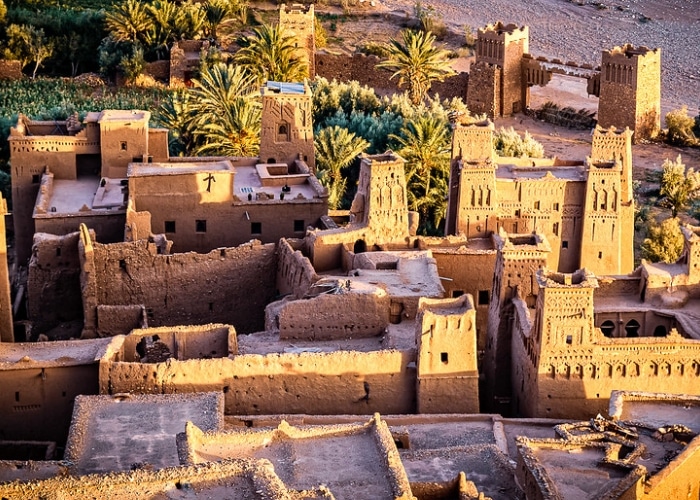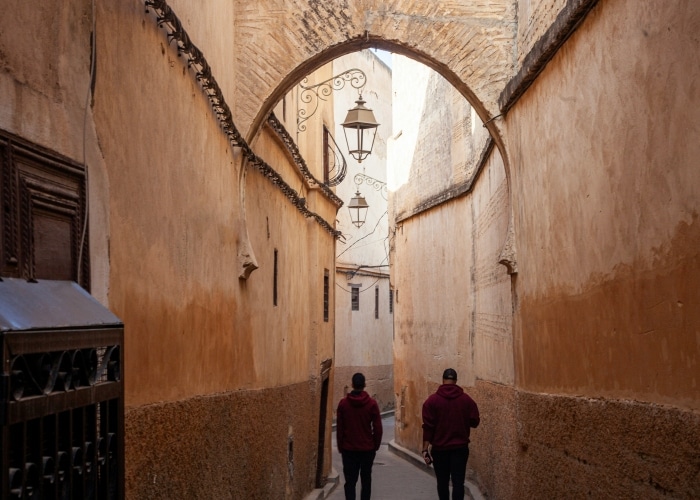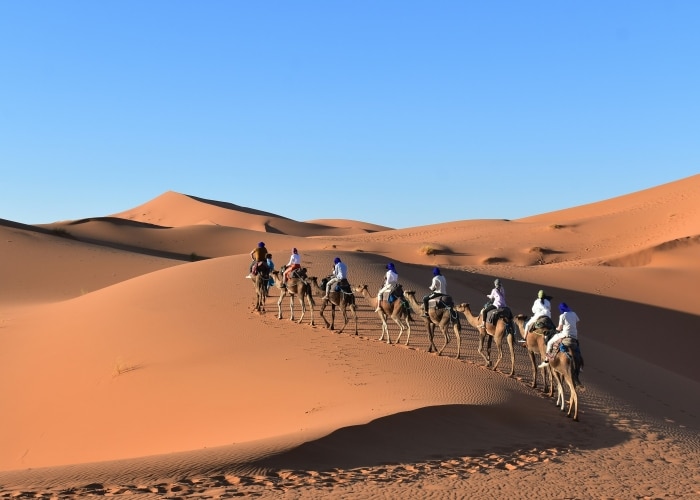Morocco offers an exceptionally wide range of activities and experiences for the many travelers who visit each year. The kingdom boasts a remarkably rich heritage as well as numerous seaside resorts with excellent infrastructure, both along the Mediterranean and the Atlantic coasts.
The country’s landscapes are strikingly diverse, from the northern plains down to Agadir, through the southern oases and the desert near the famous Marrakesh with its stunning riads. For the more adventurous, the roads through the Atlas mountains promise breathtaking views. Everywhere in Morocco, your senses are awakened. You’ll want to return again and again — for the beauty of its medinas, the aroma and taste of its delicious dishes, and most of all, for the warmth of its people.
Top 5 Guided Tours
Places to Visit
Key Facts

Chefchaouen is a blue paradise in the northwest of Morocco, about 100 kilometers from Tangier. This charming little town has a stunning medina, a maze of quiet alleys with whitewashed walls and houses painted in bright azure blue.
Begin your visit at the lovely Uta el-Hammam Square, near the Kasbah and the mosque — the beating heart of the city where locals gather to sit, talk, and enjoy a drink. Chefchaouen is beautifully framed by surrounding mountains.
A peaceful walk leads to the small spring of Ras-el-Ma, where women still wash clothes by hand, and then gently climbs along paths scented with fig trees.
From the top, you’ll be rewarded with a panoramic view of the entire Rif region. Returning to the town, you’ll once again feel the laid-back atmosphere and the soothing calm that make Chefchaouen so unforgettable.

This small town in southern Morocco lies 180 km from Marrakech and just 30 km from the center of Ouarzazate. Ait Ben Haddou is known for its distinctive fortified architecture, called a ksar — a collection of earthen houses and buildings in warm ochre tones, all surrounded by defensive walls.
The village rises on a hill in the heart of the beautiful Assif Ounila Valley, dotted with date palms and bright green patchwork fields. When the sun hits the walls, the whole site takes on a majestic glow — no wonder it has been used as a backdrop for so many films!
The Aït Ben Haddou Palace, dating back to the 17th century, once housed nearly 100 families. It still preserves several features, including the old mosque and the main granary where grain was stored.

Fes is located in northern Morocco, about 180 kilometers from Rabat. It is the country’s second-largest city, divided into three distinct areas, the modern districts built by the French, the royal enclosure, and of course the Medina, the largest in the world and also known as Fès el Bali.
This is a true labyrinth where getting lost is inevitable, and that’s part of its charm. Just be cautious of people offering to guide you to shops that are supposedly “too beautiful to miss.”
A licensed Moroccan guide can help you avoid such hassles. The Medina isn’t just a massive souk for tourists, it’s the beating heart of the city where locals move through their daily routines.
This historic core of Fes dates back to the late 8th century and has barely changed since. You’ll still find old bread ovens, traditional hammams, and countless artisan workshops.
Make sure to visit the vast Chouara Tannery, the madrasas, and ancient mosques such as Al Quaraouine, which also functions as a university and is considered the oldest still in operation, founded in 877.
Beyond the Medina, Fes hides many other treasures. Some of its elegant palaces have been transformed into riads where you can stay, and if you’re planning a trip, you might enjoy browsing a curated selection of Morocco’s most beautiful riads to get inspired. The lush Jnan Sbil Garden offers a peaceful place to rest, and the El Qolla Hill, with the ruins of the Marinid tombs, provides some of the best panoramic views of the city.

Along a road where the scenery shifts between lush oases, fruit orchards, and red-hued mountains, the impressive Dades Gorges reveal themselves, about 120 kilometers from Ouarzazate.
This is a vast canyon, plunging up to 300 meters deep in places, attracting travelers for scenic treks — or, for the more adventurous, rafting and climbing. The journey often begins in Boumalne.
About 30 kilometers further, you’ll reach the small village of Aït Arbi, where strange rock formations known as “monkey fingers” stand out against the sky. From here, you can follow the Dades River along a winding road, with the rock colors shifting from deep red to pale white as you climb.
Along the way, you’ll pass many ancient kasbahs — including the famous El Kabbaba, Amerhidi, Ben Moro, Dar Aïchil, and Dar Aït — reminders of the region’s turbulent past. Four dramatic gorges follow one another, the tallest being Tissadrine. Continue on this breathtaking panoramic road, and you’ll eventually reach the remote village of M’Semrir, the perfect ending to the journey.

An erg is a vast expanse of dunes, constantly reshaped by the wind. The Merzouga dunes, also known as Erg Chebbi, are among the most spectacular and perhaps the largest in the Sahara. They are located in southeastern Morocco, not far from the Algerian border.
Setting out on a trek with a local guide across the dunes of Erg Chebbi is the ultimate desert experience, a dreamlike adventure. Spending a few days here feels magical — far from everything, cut off from the world, surrounded only by immense dunes, some rising up to 150 meters.
You can get close by 4×4, then continue on foot or by camel to climb the dunes. Spending the night in a desert camp lets you feel the profound silence of the Sahara and witness the breathtaking spectacle of the sunrise over this vast, majestic landscape.
Rabat
Arabic, Berber
446,550 km²
July 30
37 million
Moroccan Dirham (MAD)
GMT+1
Mediterranean, Desert
+212
220 V, Type C & E